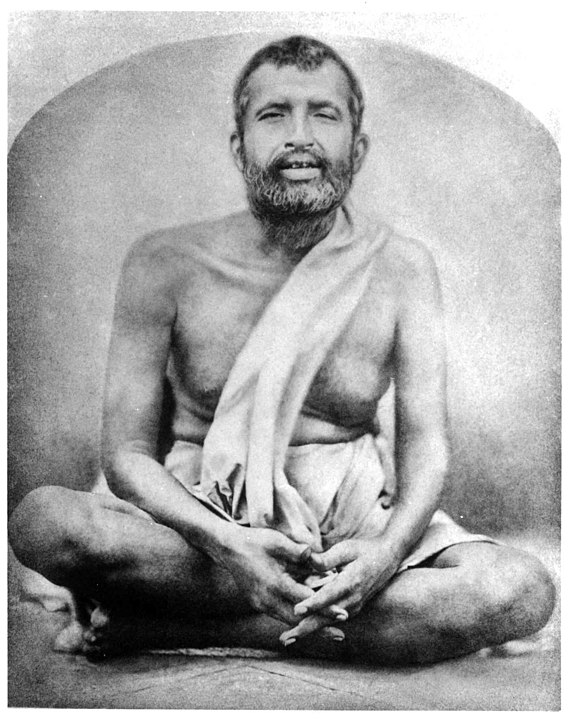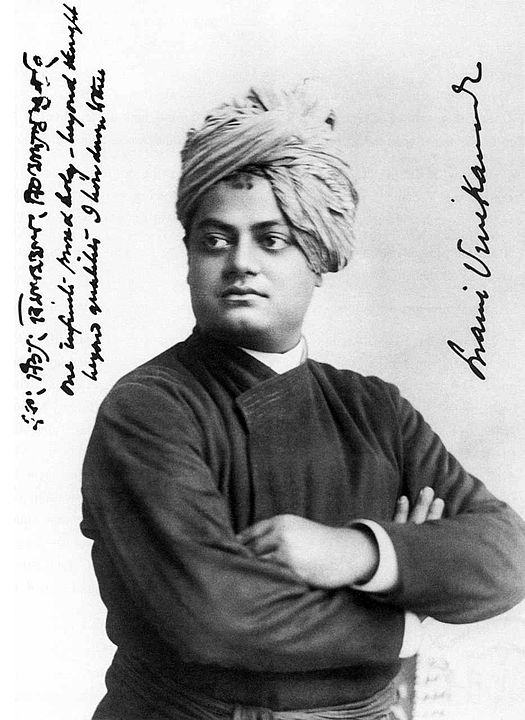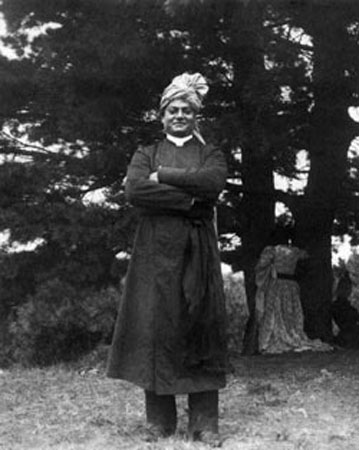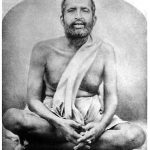Few spiritual leaders have caught the attention and imagination of both the East and the West as Swami Vivekananda did. He was a great orator and was able to put forth many important spiritual messages in a clear and easily understood manner. His message and his words are as relevant today as they were when he spoke them. They remain an inspiration to young and old alike. His teachings on Hinduism opened the eyes and hearts of many both within India and internationally. His speeches and the work of his Mission has helped India realise her great wealth and that the road to the happiness of its people and the country at large was through education and lifting the masses out of poverty.

Early Life
Swami Vivekananda was born in Calcutta on January 12, 1863, Bengal, in a well to do family. The date coincided with Makar Sankranti. He was named Narendranath Dutta and was one of eight children. His father, Vishwanath was an attorney and his mother was a God-fearing woman who taught her son well. Narendranath was a good student who was also very mischievous. He was also interested in music, sports, wrestling, gymnastics and bodybuilding. Being an avid reader, he read books on subjects that ranged from the Indian scriptures to Western philosophy and spirituality.
Spiritual Crisis
Despite his religious upbringing and extensive reading, or perhaps because of it, he had a spiritual crisis in his younger days. He thought of himself as an Agnostic for some time while also finding it difficult to ignore the presence of a Supreme Being. He was for a while associated with the Brahmo Movement led by Keshab Chandra Sen. This organisation, the Brahmo Samaj believed in one God as opposed to the superstitious and idol-worshipping practices of Hinduism. He sought spiritual leaders and posed the same question to all of them. His question was, “Have you seen God?”. He was dissatisfied with the answers from all of them.
Meeting His Guru – “Have you seen God?”
At the time of this spiritual crisis, William Hastie (the Principal of the Scottish Church College) told Narendranath about Sri Ramakrishna. When he met Sri Ramakrishna, he posed the same question to him. Sri Ramakrishna answered that he had indeed seen God just as clearly as he could see Narendranath but in a deeper sense. The simplicity of Sri Ramakrishna at first did not make a big impression on the young Narendranath. But over time, his love won him over. Every time he visited Sri Ramakrishna, he got more answers to all the questions that he had.

Sri Ramakrsihna – Swami Vivekananda ‘s Guru
In 1884, Narendranath’s father passed away leaving him with the responsibility of supporting his mother and younger siblings. He was in a precarious financial situation. He requested Sri Ramakrishna to pray to the Goddess for his family. Sri Ramakrishna suggested that he go to the temple in person and pray. When Narendranath went to the temple he found himself unable to ask for material blessings and instead prayed for ‘Vivek’ (conscience) and ‘Vairagya’ (reclusion). This incident was the beginning of a spiritual awakening in Narendranath. He was increasingly drawn to a spiritual and ascetic lifestyle.
Taking Vows
In 1885, Sri Ramakrishna was very ill on account of suffering from throat cancer. He moved to Shyampukur in Calcutta and Narendranath also followed. He with a group of ardent followers of Sri Ramakrishna, nursed their Guru till he attained Samadhi on 16 August 1886. Fifteen of his disciples began to live in a dilapidated building in North Calcutta which they called Ramakrishna Muth. In 1887, this group of young men renounced all worldly ties and took their vows of monkhood. Narendranath took the name of Vivekananda which translates as the bliss of discerning wisdom. The group of monks performed Yoga and meditation and lived of alms.
In 1886, Vivekananda left the Math and travelled across the country on foot. During his journey, he witnessed first hand the life, customs and adversities of the common man. The suffering of his countrymen moved him deeply. His wandering brought him to Kanyakumari where he swam across the ocean to a rock where he meditated for three days. On that rock, he made a resolve to bring relief to the suffering of the people. He realised that there were so many Sannyasins who roamed the country. If they were all brought together in an organised manner they could do much service to the poor and needy.

Message
Swami Vivekananda saw that the primary need of the people was an education in all the scientific subjects as well as spirituality and religion. He believed that every man had within him all that was required for perfection and that education was the requirement to bring that perfection out. Education merely helped to peel away the layers of ignorance that hid the knowledge that lay within. The people of India needed to become strong and self-reliant to make their lives as well as their country better. Individual happiness would elevate the happiness of the country. Swami Vivekananda emphasised that a person should be inspired by one idea. He should leave all other ideas and put his whole being into the one idea in order to succeed. Focussed thought and action were what produced spiritual giants.
Women’s Empowerment
Swami Vivekananda’s message also addressed the empowerment of women. He believed that women should be educated to become as fearless and brave as the great women in Indian history. Women of strength and character would raise equally strong children. It was the upliftment of women that would ensure the future of the country. Swami taught the importance of physical education. He believed that character-building and self-realisation go together with physical development. Swami Vivekananda exercised every day and advised his followers to do the same as well as teach others. He laid equal emphasis on the study of science, philosophy and religion. It was the synthesis of all this knowledge that would ultimately uplift man.
Swami Vivekananda preached the unity of man regardless of caste, creed and ethnicity. He even suggested that fanaticism about vegetarianism and non-vegetarianism was to be avoided. Though he did not deny that a Sanyasin would be better advised to be vegetarian, he did not condemn or discriminate based on food habits.
Travel Overseas
In the course of his travels, he heard that there was to be a World Parliament of Religions in Chicago, America in 1893. After many difficulties and hurdles, Vivekananda travelled to Chicago where he made a huge impact on the attendees. His oratory and message embodied the very essence of the Parliament. He then went on to give many more talks and lectures in the country both at public locations and private homes. Swami Vivekananda founded the Vedanta Society of New York in 1894. He spent two and a half years in America and then travelled to the UK.

Universal Message
Swami Vivekananda took the principles of Vedanta to the world stage and helped the world at large to understand the deep wisdom and truth behind their teachings. His message was the brotherhood of man and their unity through humanity. Swami bridged the gap between the East and the West. He made the West realise that India was not backward but rich in teachings of science, philosophy, wisdom and religion. He also understood that the greatest challenge that his countrymen faced was poverty and backwardness which his Mission worked to remedy. But the strength of the country was its culture and great history. He gave Indians a feeling of great pride and self-respect with his message. He made the world realise that India has much to give and share with the rest of the world.
Swami Vivekananda was able to express the philosophies and spiritual knowledge to the West in a way that was easily understood by them. He advocated that people should listen and absorb good advice and philosophy that they found to be true and sound without becoming somebody other than who they are.

Return To India
When he returned to India in 1897, he was warmly welcomed and gave lectures all over the country. In 1897, he founded the Ramakrishna Mission at the Belur Math in Calcutta. The primary aim of the mission was to serve the poor and distresses people in the country. The Ramakrishna mission fulfilled its objective by starting schools, colleges and hospitals while also performing social service around the country. The mission also spread the principles of Vedanta by way of talks, seminars, lectures and workshops
His religious conscience was an amalgamation of Sri Ramakrishna’s spiritual teachings of Divine manifestation and his personal internalization of the Advaita Vedanta philosophy. He directed to achieve the divinity of the soul by undertaking selfless work, worship and mental discipline. According to Vivekananda, the ultimate goal is to achieve freedom of the soul and that encompasses the entirety of one’s religion. Swami Vivekananda strived to improve the lot of the poor and downtrodden in the country. He was a nationalist who exhorted his countrymen to “Arise, awake and stop not till the goal is reached”.
Swami Vivekananda had predicted that he would not live past the age of 40 and true to his words, he attained Mahasamadhi on July 4, 1902. He was cremated on the Banks of the river Ganga.










